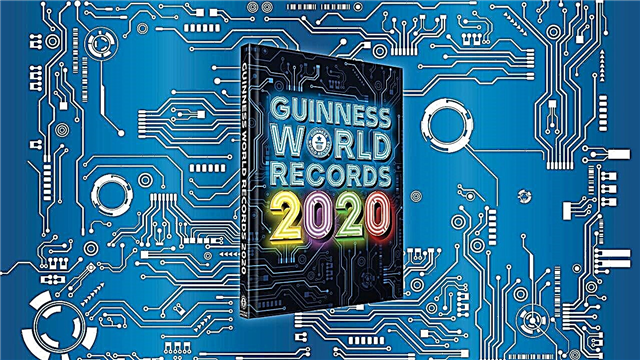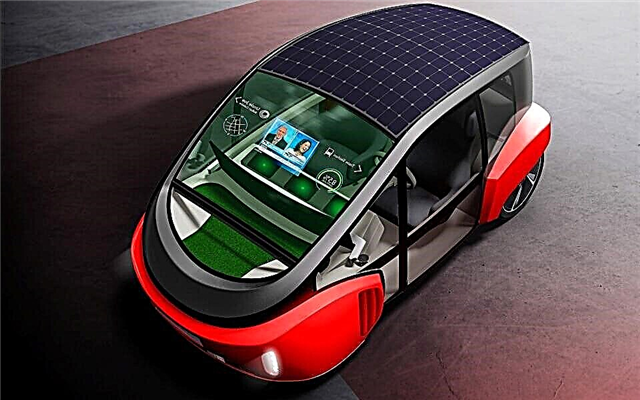Every year new technologies appear that make people's lives easier and more fun, and every year the editors and authors of the popular site MIT Technology Review choose the best of the best from these technologies.
So in 2020, they published their annual list of 10 breakthrough technologies that will change the world. And we present it to your attention.
10. The study of climate change
 Back at the beginning of this decade, scientists did not seek to draw parallels between extreme weather events, such as hurricanes and storms, and climate change.
Back at the beginning of this decade, scientists did not seek to draw parallels between extreme weather events, such as hurricanes and storms, and climate change.
But the amount of data accumulated over the past few years allows us to say with confidence: climate change almost certainly played a role in the occurrence of adverse weather events. By studying this relationship, it will be possible to create simulators and prepare in advance for risks (floods, tropical storms, etc.) as global warming intensifies.
One of the most breakthrough technologies of 2020 will also help to understand how to rebuild our cities and infrastructure for a climate-changing world.
9. Anti-aging drugs
 To be forever young and healthy is so far a pipe dream of mankind. However, the first senolytic drugs are already being tested, which help prevent various ailments by slowing down the natural aging process. They remove aged (senescent) cells that accumulate with age. Such cells do not multiply and do not die, but they can degenerate into malignant or provoke inflammation, which suppresses the normal mechanisms of cell repair and poisons the microenvironment of tissues and the whole organism.
To be forever young and healthy is so far a pipe dream of mankind. However, the first senolytic drugs are already being tested, which help prevent various ailments by slowing down the natural aging process. They remove aged (senescent) cells that accumulate with age. Such cells do not multiply and do not die, but they can degenerate into malignant or provoke inflammation, which suppresses the normal mechanisms of cell repair and poisons the microenvironment of tissues and the whole organism.
In June 2019, there were reports of the first positive results of the use of senolytics for patients with osteoarthritis of the knee. And similar drugs are already being developed for the treatment of age-related diseases of the eyes and lungs.
8. Differential privacy
 How to collect statistics about millions of Americans, while keeping their identity secret? By law, the United States Census Bureau is required to ensure that the privacy of citizens is not disclosed. To achieve this, “noise” is added to the statistics. For example, you can make some people younger, others older, turn blacks into white or vice versa.
How to collect statistics about millions of Americans, while keeping their identity secret? By law, the United States Census Bureau is required to ensure that the privacy of citizens is not disclosed. To achieve this, “noise” is added to the statistics. For example, you can make some people younger, others older, turn blacks into white or vice versa.
And differential privacy is a mathematical method that makes this process manageable by measuring how much privacy increases when “noise” is added to the data. This method is already used by Apple and Facebook to collect aggregated data without identifying individual users.
7. Miniature Artificial Intelligence
 In their quest to create powerful artificial intelligence, researchers are using ever-increasing amounts of data, relying on centralized cloud services.
In their quest to create powerful artificial intelligence, researchers are using ever-increasing amounts of data, relying on centralized cloud services.
But how to cram a huge amount of data in miniature AI? With the help of new algorithms that will allow you to compress existing deep learning algorithms without losing all their capabilities. It is such algorithms that are implemented in the new generation of specialized chips with AI, which will be used in our smartphones and other gadgets.
The simplest example is Google’s smart assistant. In May last year, the company announced that now its mobile Google Assistant can work without sending requests to a remote server. On iOS 13 for Apple smartphones, Siri speech recognition and QuickType keyboards work locally. The capabilities of miniature AI have also been adopted by IBM and Amazon.
So in the future, the AI used on a mobile phone may be smarter than some users.
6. Quantum Excellence
 Quantum computers, theoretically, can quickly solve such problems that super-powerful modern computers will take centuries, if not millennia, to solve. For example, simulate the exact behavior of molecules to create new drugs and materials.
Quantum computers, theoretically, can quickly solve such problems that super-powerful modern computers will take centuries, if not millennia, to solve. For example, simulate the exact behavior of molecules to create new drugs and materials.
Last October, Google demonstrated “quantum excellence.” A computer with 53 qubits, the main unit of quantum computing, did the necessary calculation within three minutes, which, according to Google, would take 10,000 years from the largest supercomputer in the world (1.5 billion times longer than a quantum computer).
However, this is still a demo version, and the company will have to create a computer that can solve useful tasks. And this is an extremely difficult task: the more qubits, the more difficult it is to maintain their fragile quantum state.
5. Satellite mega-complexes
 The ability to build, launch and operate tens of thousands of satellites in orbit is no longer a fantasy, but a reality. According to the SpaceX project alone, it is planned to send 4.5 times more satellites into orbit in one decade than during the entire “satellite” period.
The ability to build, launch and operate tens of thousands of satellites in orbit is no longer a fantasy, but a reality. According to the SpaceX project alone, it is planned to send 4.5 times more satellites into orbit in one decade than during the entire “satellite” period.
This will help spread the Internet and improve communications on Earth. However, this technological breakthrough has a downside. Some researchers are afraid that these objects will interfere with astronomical research. Only the prospect of a collision of satellites can be worse than this, which will cause a large amount of space debris.
4. Molecules Detected by AI
 It is unlikely that you will be able to manually count the molecules that could potentially serve to create valuable drugs. Their number, according to researchers, reaches 10 to 60 degrees. This is more than atoms in the solar system.
It is unlikely that you will be able to manually count the molecules that could potentially serve to create valuable drugs. Their number, according to researchers, reaches 10 to 60 degrees. This is more than atoms in the solar system.
And thanks to artificial intelligence (AI), scientists can get huge databases of existing molecules and their properties. This will create new drugs faster and cheaper.
3. Electronic money
 Electronic money like WebMoney in Russia will not surprise anyone. What about introducing a single digital currency nationwide? This technology can really be called interesting and breakthrough.
Electronic money like WebMoney in Russia will not surprise anyone. What about introducing a single digital currency nationwide? This technology can really be called interesting and breakthrough.
Last June, Facebook introduced the “global digital currency” called Libra. The idea was not approved and the project may be put in a long box.
However, a few days after the announcement of Facebook, an official from the People's Bank of China suggested the emergence of Chinese digital currency.
Now, China is preparing to become the first world economy to release a digital version of its money, which will be used as a replacement for cash.
2. Individualized medical services
 Some of the worst diseases known to mankind are so rare that they occur one in ten thousand times, or even less. And it happens that for a rare disease there is no cure.
Some of the worst diseases known to mankind are so rare that they occur one in ten thousand times, or even less. And it happens that for a rare disease there is no cure.
But this sad situation can change, thanks to new classes of drugs that can be adapted to human genes. If this extremely rare disease is caused by a specific DNA error, then modern science gives the patient at least a chance of correcting it.
New drugs can become a kind of molecular eraser that erases or corrects erroneous genetic information. An example of such a personalized drug is already there, the doctors created it for the little girl Mila Makovets, suffering from Betten's disease caused by a unique mutation of the MFSD8 gene. Treatment with Milasen did not completely cure Mila, but stabilized her condition.
The only problem is who will pay for such drugs when they help one person, if it is much more profitable for pharmaceutical companies to produce widely needed drugs.
1. Internet protected from hackers
 Quantum technology will help create a network that cannot be cracked. It is this task that the team from the Delft University of Technology in the Netherlands is engaged in. She is building a network connecting four cities in the Netherlands and using exclusively quantum methods in transmitting information.
Quantum technology will help create a network that cannot be cracked. It is this task that the team from the Delft University of Technology in the Netherlands is engaged in. She is building a network connecting four cities in the Netherlands and using exclusively quantum methods in transmitting information.
The technology is based on the quantum behavior of atomic particles - the so-called "quantum entanglement." The main difficulty in creating a network is that entangled particles are difficult to create, and even harder to transmit over long distances. So far, researchers from the University of Delft have managed to send data for more than 1.5 km, and they are confident that they can create a quantum connection between Delft and The Hague around the end of this year.












